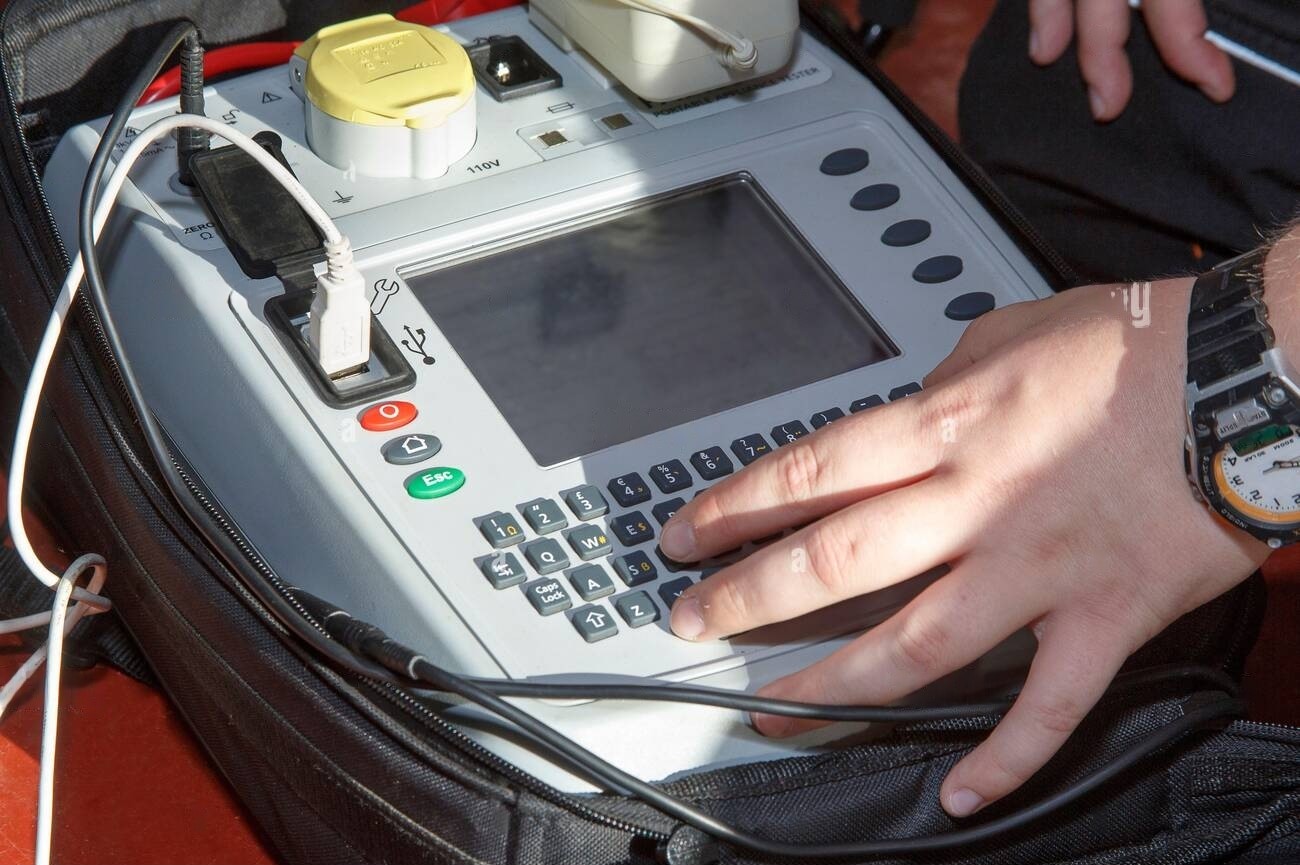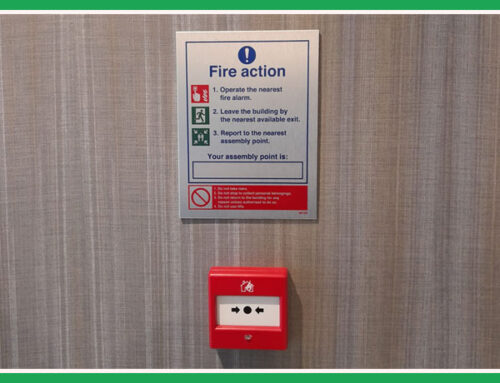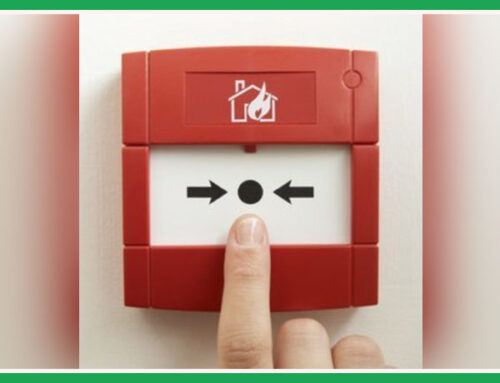Discover why PAT testing is crucial for businesses: its legalities, procedures, equipment, frequency, and risks of non-compliance.
What is PAT Testing?
PAT testing stands for “portable appliance testing”. It is the process of checking portable electrical equipment for safety. The official term is “in-service inspection and testing of electrical equipment” (Wikipedia).
The purpose of PAT testing is to ensure electrical safety and help prevent fires and accidents caused by faulty appliances. It checks that the equipment is wired correctly, has no damage, and does not have any defects that could allow electric shocks or burns. PAT testing is required by law in some cases (such as businesses renting out electrical equipment), while in other cases it is a matter of good practice and due diligence.
The types of equipment covered includes things that are plugged into power outlets and moved around, such as kettles, heaters, fans and IT equipment. The goal is to identify any damage, faults or lack of maintenance in the equipment that creates a safety hazard.
Why is PAT Testing Important?
PAT testing is important for two key reasons: preventing electric shocks, fires and injuries, and ensuring legal compliance.
By regularly testing portable electrical appliances, faults can be identified before they cause a dangerous incident. Things like damaged cables, poor connections, and appliance deterioration can lead to electric shocks, burns, or even fires. PAT testing helps find these issues early.
Statistics show the value of PAT testing for safety. For example, according to National Safety Inspections, 25% of electrical fires are caused by electrical supply issues and 22% by appliance defects – both things picked up by PAT testing.
PAT testing also provides legal compliance. The Electricity at Work regulations make electrical safety mandatory. While there are no fixed legal requirements for PAT testing frequencies, following best practice guidelines for regular PAT testing demonstrates due diligence according to regulations.
By preventing electrical accidents and fires, PAT testing protects employees and the public. It also reduces disruption from serious incidents and insurance claims. Overall it gives small business owners peace of mind their legal duties are being met.
PAT Testing Legal Requirements
There are no general legal obligations requiring businesses to conduct PAT testing on portable electrical appliances they own. The main regulations covering electrical safety in UK workplaces are the Electricity at Work Regulations 1989.
These state that all electrical systems and equipment used in a business must be in a safe condition and properly maintained, but do not mandate any specific system of testing or inspection.
According to HSE guidance, implementing a system of visual inspections and PAT testing is an effective way for businesses to meet their legal duties under the Electricity at Work regulations.
There are requirements for more formal PAT testing in some specific cases:
- Businesses hiring out electrical equipment must ensure it is safe for use and may require annual PAT testing to demonstrate this.
- Equipment used in higher-risk environments like construction sites is expected to receive more frequent inspections and PAT testing.
For most office-based businesses focusing on the Electricity at Work regulations and following HSE guidance on PAT testing frequencies represents good practice, helping ensure the safety of employees and visitors.
Recommended PAT Testing Frequencies
There are no fixed legal requirements for how often PAT testing must be carried out. However, the HSE provides general guidance on suggested frequencies for testing different types of electrical appliances based on risk level.
For office equipment like computers, printers and photocopiers used in low-risk environments, PAT testing every 2-4 years is recommended. Portable appliances like kettles, fans and vacuum cleaners should be tested more frequently – every 6-12 months is suggested. Handheld items like power tools should be tested before each use.
Equipment used by the public like rental appliances or hotel hairdryers require more frequent testing than staff-only equipment. Public use items should be tested every 6-12 months.
In higher risk environments like construction sites or factories, more frequent PAT testing is advised. The HSE recommends testing portable appliances every 3-6 months in these settings.
It’s important to develop a PAT testing schedule that matches the level of risk and type of equipment in your specific business. Keeping detailed records will also help identify any appliances that require more frequent inspections.
Let me know if you would like me to modify or expand this section further.
The PAT Testing Process
PAT testing involves a thorough visual and electrical inspection of electrical equipment. There are several key steps involved:
Visual Inspection
The first step in PAT testing is a visual inspection of the appliance. The tester will look for any signs of external damage, worn cables or plugs, loose parts, or other visible issues that could make the appliance unsafe. They will check that the plug has the correct fuse and that the cable is the right size and type for the appliance.1
Earth Bond Test
The earth bond test checks that the earth wire provides a safe path for electricity to flow to ground in the case of a fault. This prevents electric shocks. The tester connects the appliance to the PAT machine and passes a small electric current through the earth wire to measure resistance. A pass confirms the earth wire is connected properly.2
Insulation Resistance Test
The insulation resistance test applies a high voltage between the live/neutral connections and earth casing. This checks for any current leaking through the insulation, which could indicate damage. There should be very high resistance to prevent current flowing. Different minimum pass values apply for different appliances.
After all required tests, appliances will get a pass or fail label. Any failed appliances should be removed from use and repaired or replaced.
Types of Equipment to Test
When deciding what electrical equipment needs PAT testing, it’s important to understand the difference between portable and fixed appliances.
Portable appliances are those that can be easily moved around and include:
- Kettles
- Toasters
- Microwaves
- Fans
- Laptops and mobile phones
- Extension leads
- Power tools
Fixed electrical equipment is not intended to be moved and includes:
- Wired alarm systems
- Storage heaters
- Electric vehicle charging points
- Boilers
- Installed air conditioning units
In general, all portable electrical appliances in a workplace require PAT testing on a regular basis. Fixed appliances may not need testing as frequently, but should still be checked periodically according to guidelines.
Hiring a PAT Testing Company
Many small businesses find it beneficial to hire an outside company to handle their PAT testing rather than trying to do it in-house. There are a number of advantages to outsourcing PAT testing:
Professional electrical safety expertise – PAT testing companies specialize in appliance testing day in and day out. Their technicians are highly trained and experienced in using testing equipment and accurately assessing results.
Saves staff time and hassle – Your own employees don’t have to disrupt their normal work to do PAT testing. And you avoid having to send staff for training on how to do testing properly.
External validation – Having an independent, external company perform the testing provides validation that appliances have been thoroughly checked according to regulations.
Access to testing equipment – Good PAT testing companies will have high quality, well-calibrated testing equipment that most businesses would not own themselves.
Certified reports and record-keeping – You’ll receive professional certificates and reports to document the testing and keep on file as evidence of compliance.
When hiring a PAT testing service, make sure to vet them thoroughly first. Key things to look for include:
– Evidence of proper qualifications and training, such as being a member of a trade association like NICEIC.
– Strong client references and testimonials.
– Clear pricing with no hidden fees.
– Detailed reports provided after testing.
– Availability to test equipment onsite at your premises.
– Adherence to all health and safety requirements.
A reputable, experienced PAT testing company can actually save you time and money in the long run by preventing safety incidents and providing peace of mind that your electrical appliances meet standards.
Doing PAT Testing Inhouse
Some businesses choose to conduct PAT testing in-house rather than hiring an external company. This can reduce costs but does require proper training and equipment. There are a few key considerations for DIY PAT testing:
Staff training – Anyone doing in-house PAT testing needs to be properly trained and certified. There are courses available to gain the skills and knowledge needed to test electrical appliances safely and effectively.
Equipment – Proper PAT testing equipment must be purchased, such as a portable appliance tester device, test leads, and probes. Investing in quality equipment helps produce reliable and accurate test results.
Record keeping – Careful documentation of all PAT testing is crucial, including appliance details, test results, and next test due dates. Keeping detailed records also aids with demonstrating legal compliance.
Testing time – Doing PAT testing in-house requires a significant time commitment to thoroughly test all electrical appliances on a regular schedule. This workload needs to be accounted for.
Professional verification – It can be beneficial to periodically have an external PAT testing company review in-house processes and paperwork to verify proper procedures are followed.
By ensuring proper training, equipment, documentation, and oversight, businesses can potentially save money by keeping PAT testing in-house while still maintaining safety and legal compliance.
Maintaining PAT Testing Records
Keeping accurate records of PAT testing is vital for businesses to remain legally compliant and ensure ongoing safety. According to the HSE Memorandum of Guidance on the Electricity at Work Regulations 1989, there is no specific legal requirement to retain testing records. However, it is strongly recommended to maintain certificates and reports for accountability.
PAT testing records allow you to demonstrate due diligence in maintaining electrical safety. The records serve as proof that required tests were carried out on applicable equipment within the recommended timescales. Detailed reports should include test dates, appliance details, test results and pass/fail status. Certificates also validate that testing was done by a qualified, competent person.
Insurance companies may request PAT testing records in the event of an electrical accident or fire. Thorough records also help you implement an effective maintenance and replacement schedule for equipment. The Skills Training Group advises retaining records for at least 3 years, but up to 5 years is preferable. Keeping digital copies is recommended for easy retrieval and analysis if needed.
Consequences of Failing to Test
Failing to properly test and maintain electrical equipment can have serious consequences for a business. There are legal penalties for non-compliance, as well as risks to employee safety and potential issues with insurance claims.
According to Intersafe, the Health and Safety at Work Act 1974 requires employers to ensure the safety of electrical equipment. Failure to comply could lead to fines up to £20,000 or even imprisonment if equipment is deemed unsafe.
In addition, the Electricity at Work Regulations 1989 require precautions to be taken against electrical risks. Breaches can incur fines up to £5,000 and/or six months imprisonment, especially if an accident occurs that could have been prevented by proper PAT testing.
Aside from legal penalties, failing to PAT test also presents significant risks to employee and customer safety. Faulty electrics are a major cause of fires and electric shock incidents. Lives could be put at risk if PAT testing is neglected.
Furthermore, insurance claims related to electrical fires or accidents may be invalidated if equipment is found to be poorly maintained. Having appropriate PAT testing records is key for demonstrating duty of care in potential legal proceedings.
In summary, consequences of failing to conduct PAT testing can be severe. No business owner should underestimate the legal, safety and insurance implications of neglecting this crucial process.



